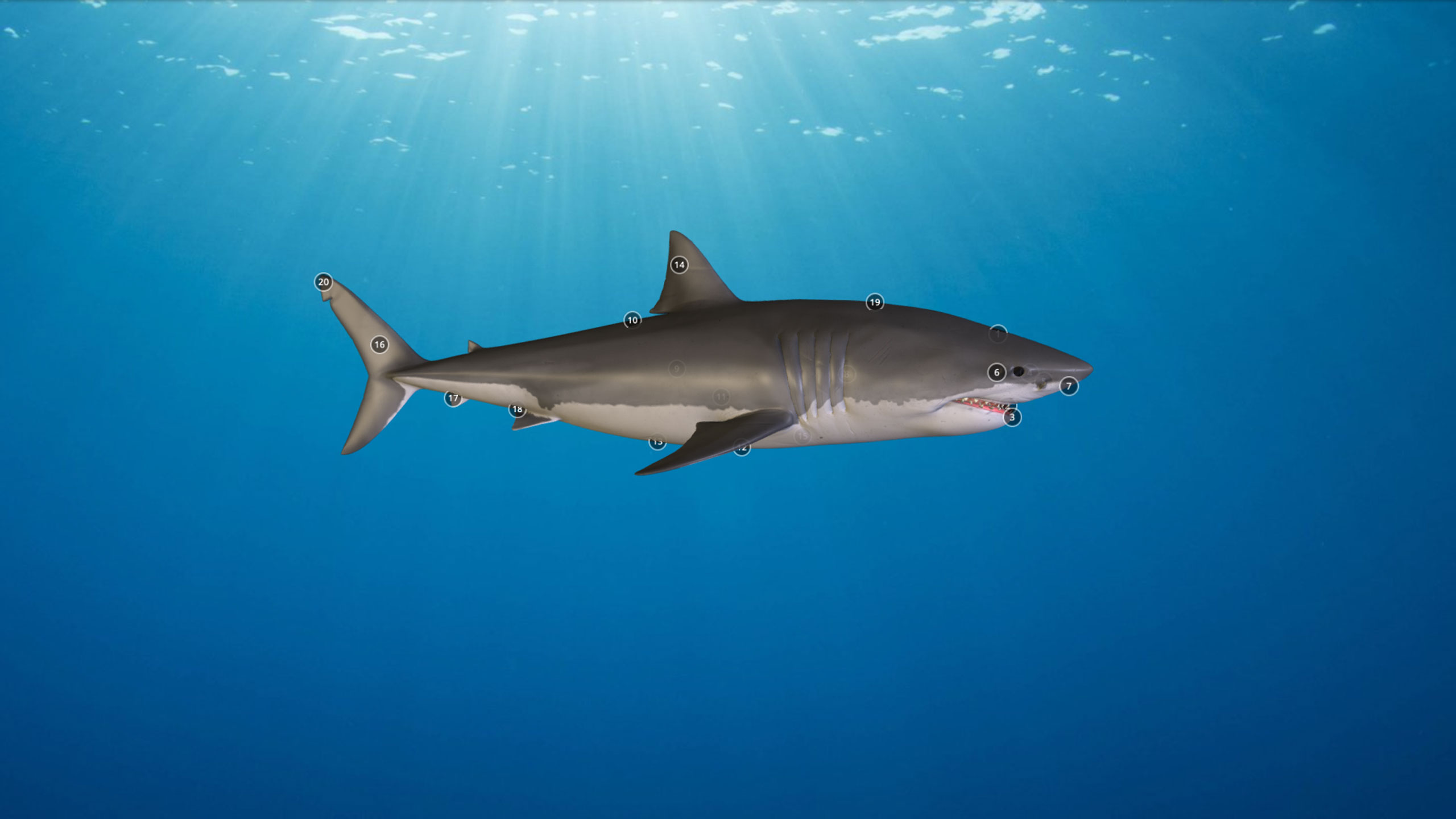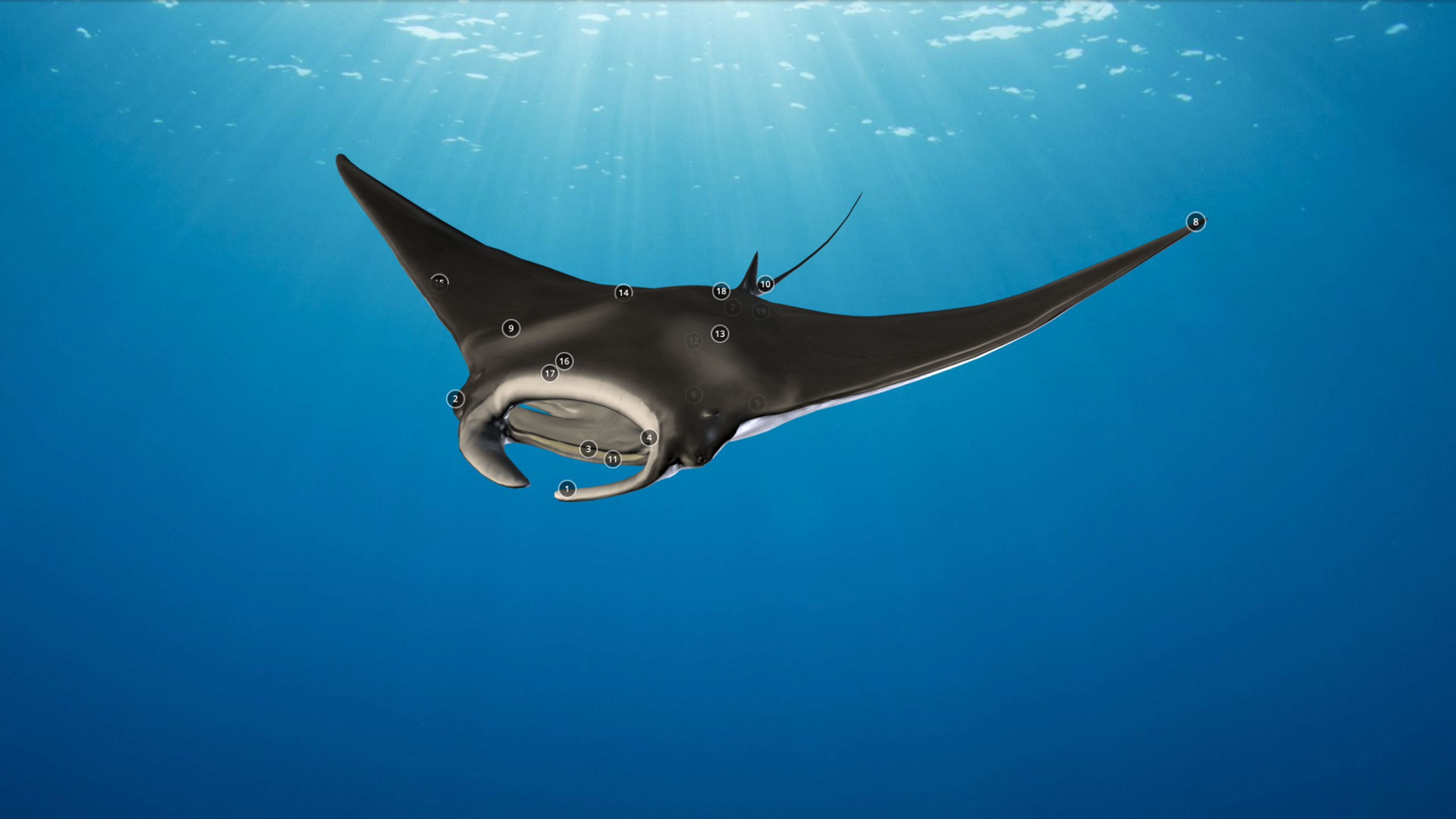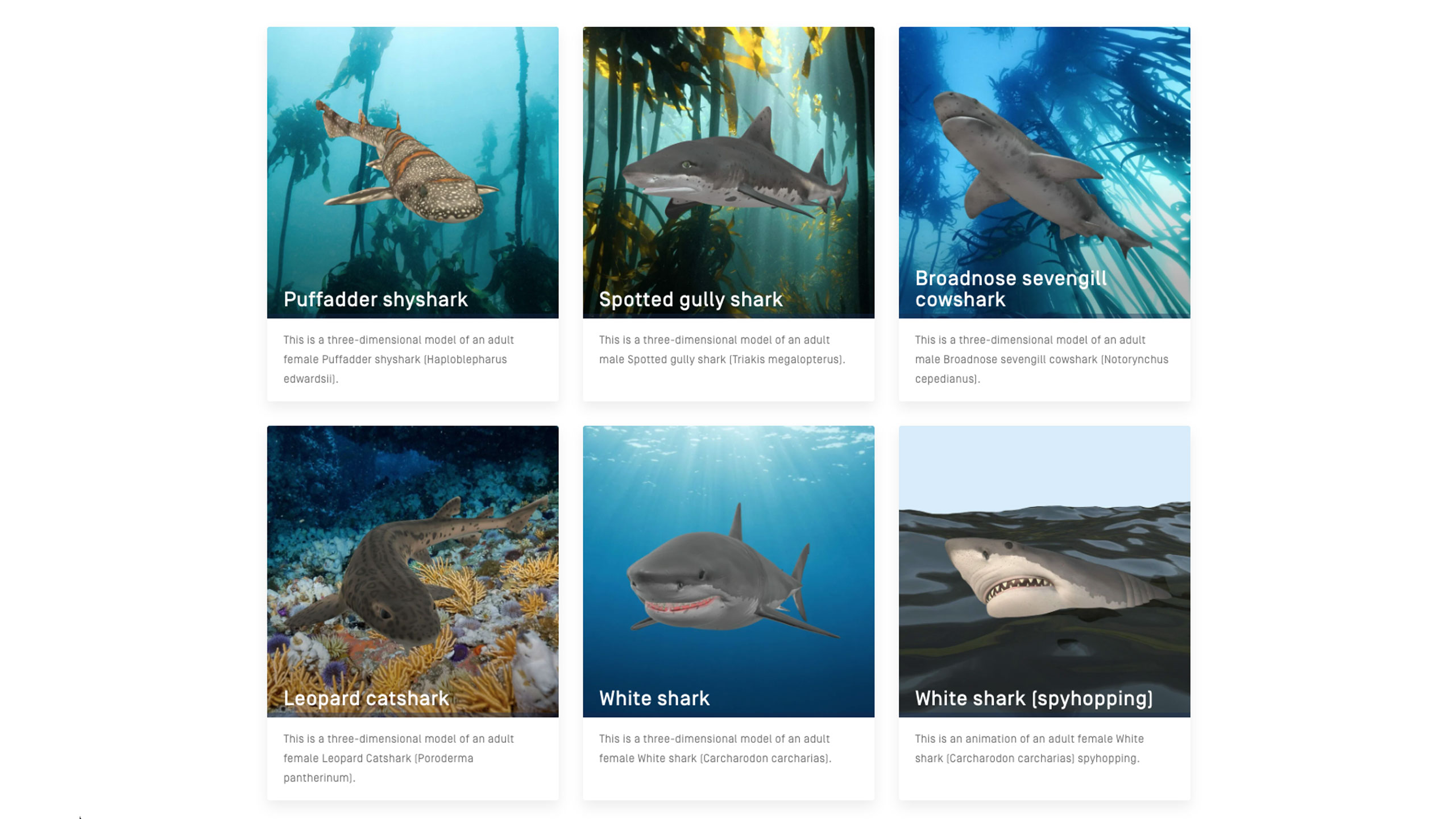Get up close and personal with white sharks, manta rays and more … in 3D
Have you ever tried to Google whether sharks sleep and then been lost in a maze of misinformation? The most up-to-date and scientifically reviewed answer is written up as a topic page on World of Sharks, the Save Our Seas Foundation’s (SOSF’s) one-stop shop for shark information. Do you have a favourite shark you want know more about, or need to research for a school project? Species fact files with fun illustrations by Rohan Chakravarty are available to download at the click of a curious cursor. Do you want experts to answer your burning shark questions? Tune into the World of Sharks podcast with host Dr Isla Hodgson and hear about everything from climate change and endangered sharks to prehistoric ocean life, directly from the people who have dedicated their lives to studying these topics.
A visit to the SOSF World of Sharks website could help you sift through the confusion of information on the internet and will guide you to infographics, podcast episodes, species information cards and topic pages that cover everything you’ve ever wanted to know about sharks and rays. ‘We wanted World of Sharks to be the ultimate shark FAQ – created to answer all of the what, where, when and why questions that people want to ask about sharks and rays,’ says SOSF CEO Dr James Lea. ‘Through engaging and accessible content, we hope to grow a repository of fascinating shark facts that people can trust.’
3D models were made by Digital Life Project at the University of Massachusetts, Amherst, USA
The world is still a tough place for sharks and rays. With more than a third of these species threatened with extinction, we still have much work to do to change misconceptions, banish misinformation and empower as many people as possible with useful information so that they can also participate in conservation. The trick often lies in making accessible the jargon typical of scientific literature and in opening access to research publications, results and processes that are barred by paywalls. Above all, making key concepts understandable by being engaging, interactive and visual can translate so much of what we need to know about sharks in order to help them.
– James Lea
The SOSF has a strong legacy of using communication and storytelling to do this, but this most recent commission with innovators from the University of Massachusetts Amherst harnesses the power of creative design, internet connectivity and technological advancement.
In its latest addition to the World of Sharks website, SOSF will host interactive 3D white shark and manta ray models designed by the University of Massachusetts. The interactive biology models allow website users to understand different elements of shark and ray physiology. ‘I was really wanting to create something 3D and interactive, where visitors to the World of Sharks page can explore in an engaging way that highlights the evolution of sharks and rays and demystifies their unique adaptations,’ explains Jade Schultz, content manager for the SOSF.
A visit to the website’s resident 3D manta ray means swivelling and exploring what this incredible ray looks like and how it moves. What makes it a ray? Where are its gill rakers? Hovering your cursor over key features will bring up pop-up information that allows you to explore everything from how manta rays filter feed to why they are under threat. A key drawcard is the phenomenal design of the 3D white shark, swimming in perpetuity through the ether on World of Sharks and allowing users to explore a realistic and anatomically correct model. Marvel at feats of evolution and understand facts like how sharks’ dorsal fins are used by scientists to identify individuals in a population.
Moving across to the newly launched SOSF Shark Education Centre’s (SEC’s) website introduces visitors to a diversity of sharks in 3D, all demonstrating different elements of swim style and behaviour. Young visitors to the SOSF-SEC in Cape Town, South Africa, have the incredible opportunity to traipse along the rocky shore across the road from the centre’s building in the Dalebrook marine protected area. This kind of in-person experience of the environment is irreplaceable, but to dive a little deeper into the reaches just offshore, some technological wizardry and creative flair is necessary. ‘We have developed six different species,’ explains Dr Clova Mabin, director of the SOSF-SEC. The puffadder shyshark, white shark, spotted gully shark, leopard catshark, bronze whaler and broadnose sevengill cowshark are all typical and important inhabitants of False Bay, the largest bay in southern Africa and the watery expanse that the SOSF-SEC overlooks. Children who would never otherwise dip below the waves to see how these sharks behave, or where they live, will now be able to see an endemic (found nowhere else in the world) shyshark curl into a defensive little doughnut shape. From the screens of their iPads in the centre or from the comfort of home on the website, children (and their caregivers!) can marvel at the most amazing feats of the sharks that live on their doorstep. Simulating behaviours like spyhopping in white sharks and enabling children to understand how sharks move naturally in their environment give the youngsters an immersive experience, regardless of whether they have access to the ocean.
Still in the throes of brainstorming and development that will expand these tools to their full potential, Clova enthuses, ‘We also think that it might be possible to use them as a teaching tool in the classroom, to simulate field work. Learners could view them on the iPads and potentially take various measurements, comparing them across the different species.’ Of course, nothing quite replaces the experience of the real deal – but in a world where access to technology opens a world of possibilities, harnessing its power for satisfying curiosity and combating misinformation is an exciting new avenue for the SOSF.



